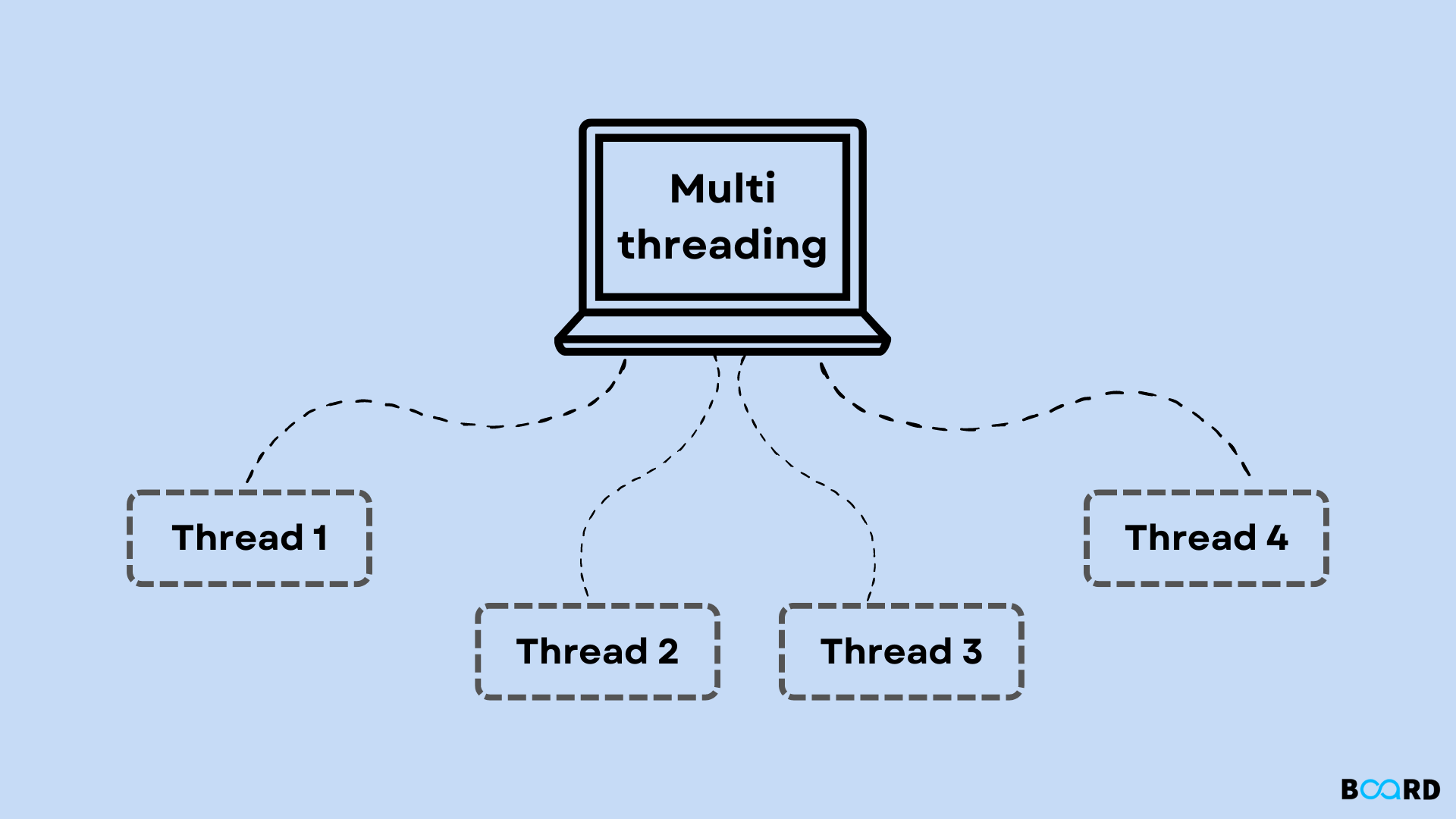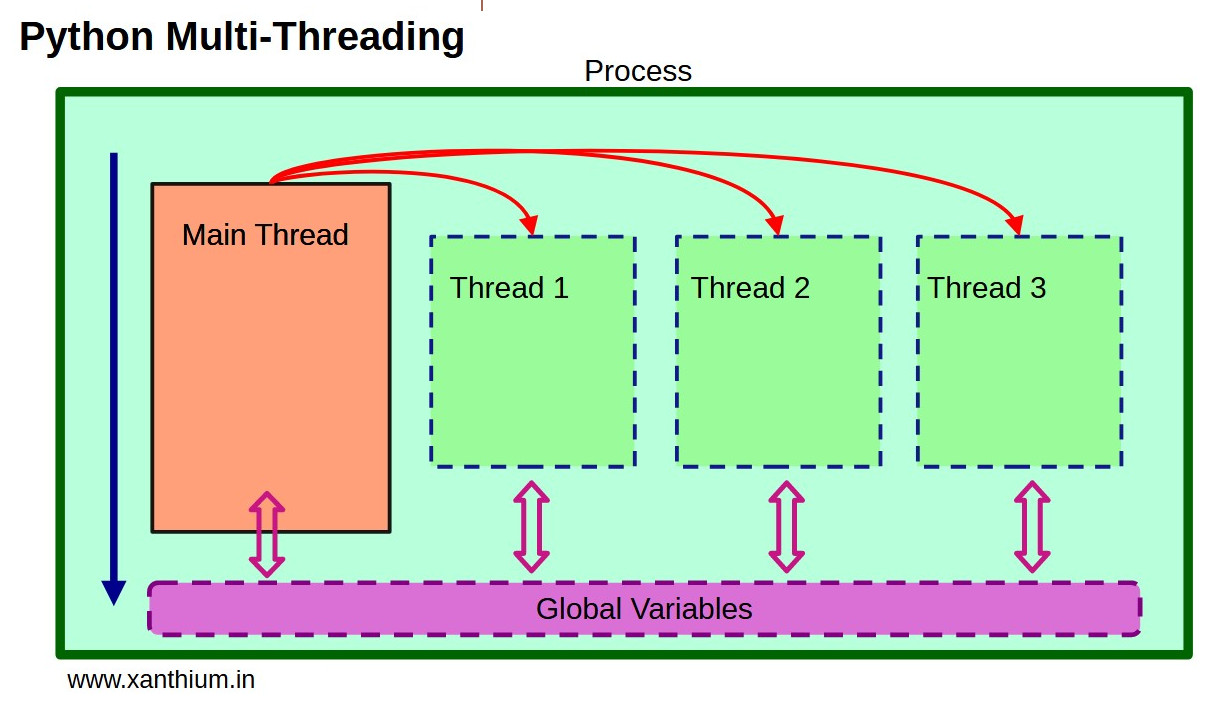
Python Multithreading with ThreadPoolExecutor
ThreadPoolExecutor is Python's high-level interface for managing thread pools, allowing you to run multiple tasks concurrently without manually creating threads. It's perfect for I/O-bound operations like network requests or file operations.
Why Use ThreadPoolExecutor?
Traditional threading in Python can be complex to manage. ThreadPoolExecutor simplifies this by:
- Automatically managing thread creation and reuse
- Providing a clean interface for submitting tasks
- Handling task queueing when all threads are busy
- Reducing overhead compared to creating new threads for each task
Basic Example
Here's how to create a thread pool with 3 workers and submit 6 tasks:
import time
import logging
from concurrent.futures import ThreadPoolExecutor
logging.basicConfig(level=logging.DEBUG, format='%(threadName)s: %(message)s')
def task(a, b):
logging.info(f'Starting task with {a} and {b}')
time.sleep(1) # Simulate work
logging.info('Task completed!')
with ThreadPoolExecutor(max_workers=3) as executor:
for i in range(6):
executor.submit(task, i, i*10)How ThreadPoolExecutor Works
+-----------------------+
| ThreadPoolExecutor |
| (max_workers=3) |
+-----------+-----------+
|
| Distributes tasks
v
+-----------+-----------+
| Task Queue |
| (FIFO - First In |
| First Out) |
| |
| - task(0,0) |
| - task(1,10) |
| - task(2,20) |
| - task(3,30) |
| - task(4,40) |
| - task(5,50) |
+-----------+-----------+
|
| Workers pick tasks
v
+-----------v-----------+
| Worker 1 | Thread-1
| Executing task(0,0) |
+-----------------------+
+-----------v-----------+
| Worker 2 | Thread-2
| Executing task(1,10) |
+-----------------------+
+-----------v-----------+
| Worker 3 | Thread-3
| Executing task(2,20) |
+-----------------------+
Key Concepts
1. Worker Threads: The number of concurrent threads (set by max_workers)
2. Task Queue: When all workers are busy, new tasks wait here
3. Thread Reuse: Workers process multiple tasks sequentially
Real-World Analogy: Pizza Delivery

Imagine your program is a pizza shop with:
- 3 delivery drivers (worker threads)
- 6 orders (tasks) come in at once
- First 3 deliveries go out immediately
- Remaining 3 wait until drivers return
Expected Output
Thread-1: Starting task with 0 and 0 Thread-2: Starting task with 1 and 10 Thread-3: Starting task with 2 and 20 Thread-1: Task completed! Thread-1: Starting task with 3 and 30 Thread-2: Task completed! Thread-2: Starting task with 4 and 40 Thread-3: Task completed! Thread-3: Starting task with 5 and 50 Thread-1: Task completed! Thread-2: Task completed! Thread-3: Task completed!
When to Use ThreadPoolExecutor
- I/O-bound operations (HTTP requests, file I/O)
- Parallel processing of independent tasks
- When you need to limit concurrent operations
Pro Tip: For CPU-bound tasks, consider
ProcessPoolExecutor instead to avoid Python's GIL limitations.